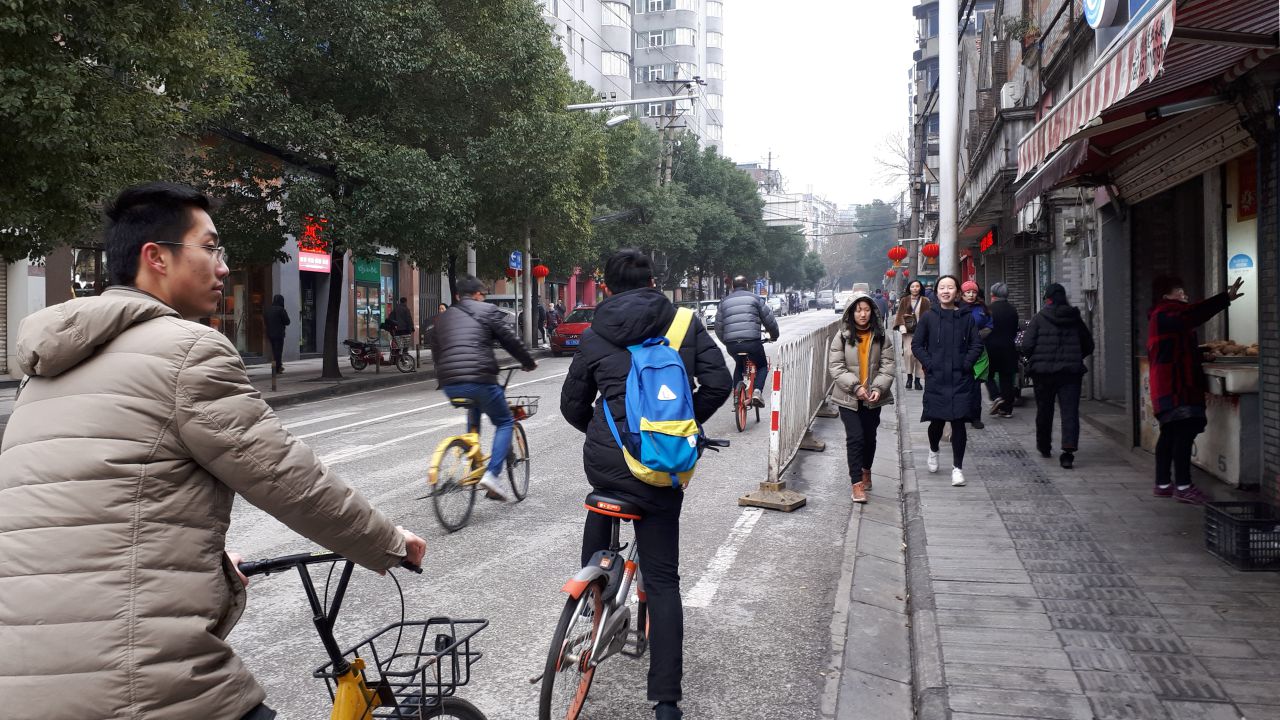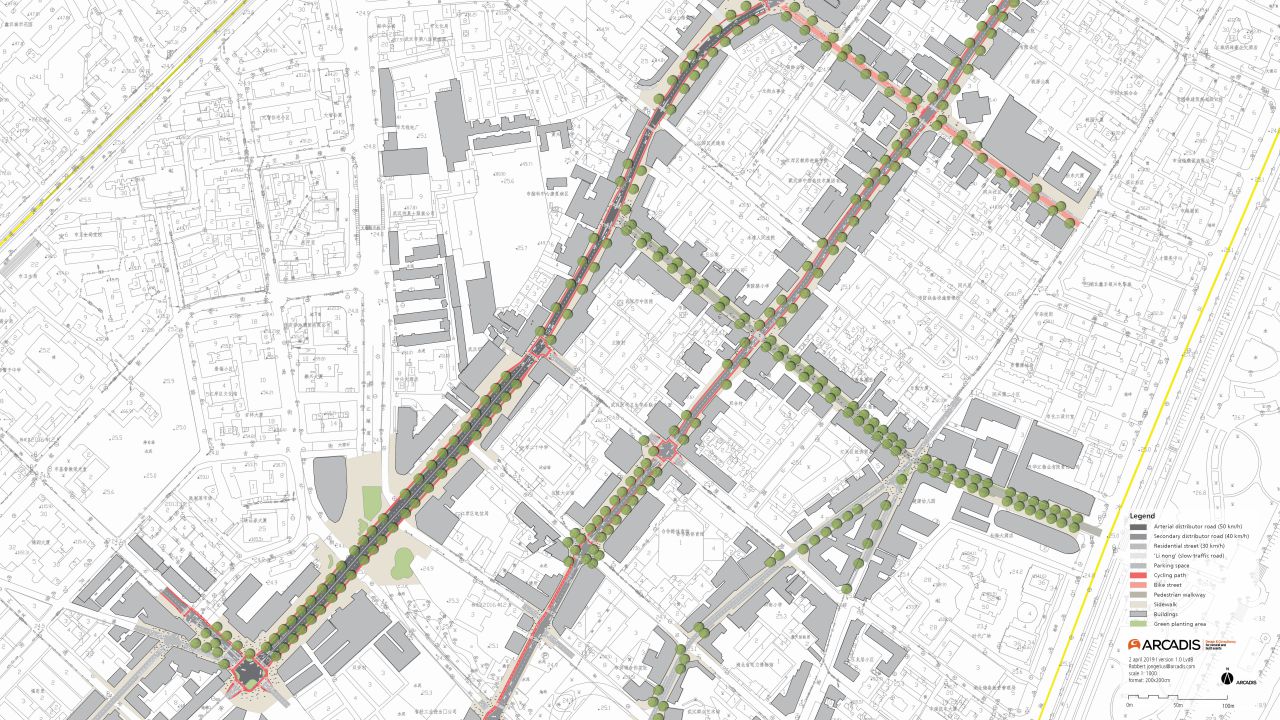Wuhan, China - “Bicycles play a very important role in creating more human cities,” according to the UN’s New Urban Agenda. Investment in the slow-traffic network in an around the city is essential in order to prioritize cyclists and pedestrians. In the city of Wuhan, China, use of bicycles has fallen by 28% over the past 30 years. The question the city asked us was: “How can we make cycling and walking a popular form of commuter transport again in Wuhan?”
| Location | Wuhan, China |
| Assignment | Master plan, strategy |
| Design | 2018-2019 |
| Client | Wuhan Planning and Design Institute (WPDI) |
| Team | John Boon, Robbert Jongerius |
| In collaboration with | Arcadis China en WPDI |
In order to make the city of Wuhan livable and attractive and to keep transport affordable for everyone, we developed a slow-traffic master plan, together with Arcadis China and the local Wuhan Planning & Design Institute (WPDI). The objective was to increase the number of cyclists in the city.
Slow-traffic facilities need to be safe, coherent, direct, comfortable, attractive and accessible. These six components form the basis for a master plan that makes the center of Wuhan the most cycling-friendly inner city in China. The slow-traffic plan consists of a main network, basic network and recreational network. The plan is based on the existing urban fabric, crossing physical barriers and connecting key destinations like metro stations and shopping streets.
The result of our slow-traffic plan is healthier inhabitants, a higher quality of life, a better economy and cleaner air. It also enriches the identity of Wuhan.

